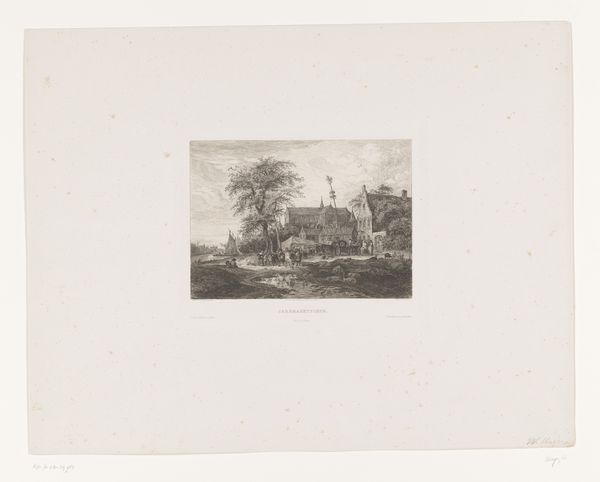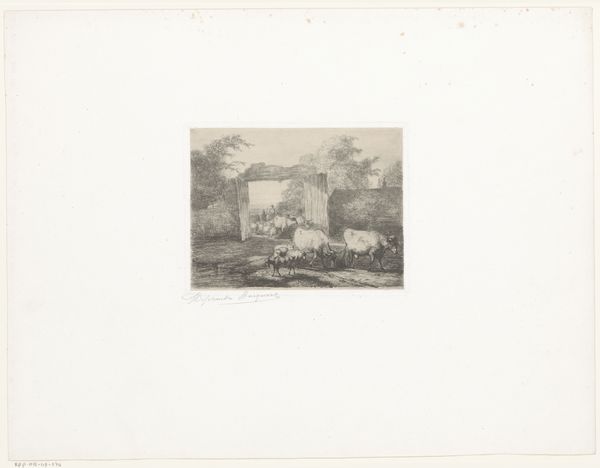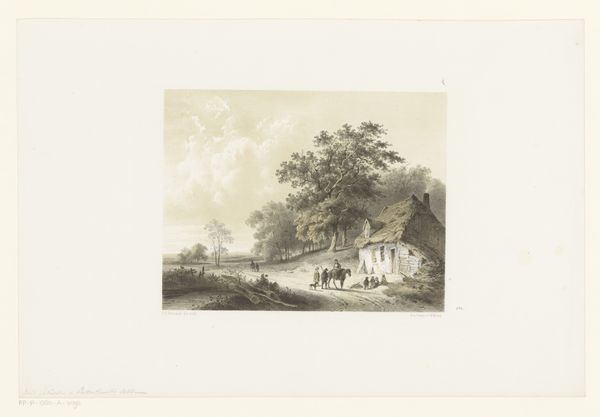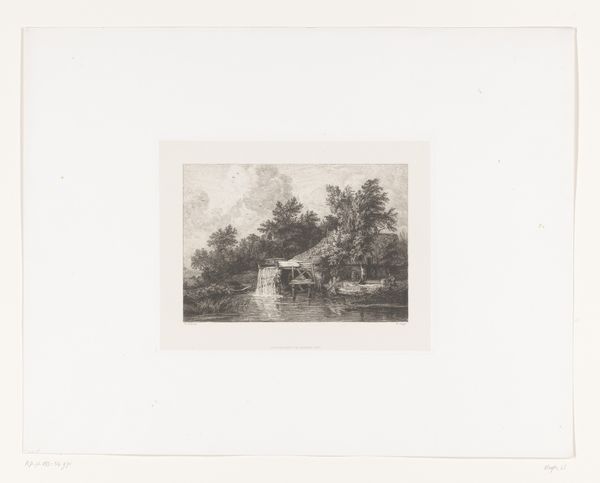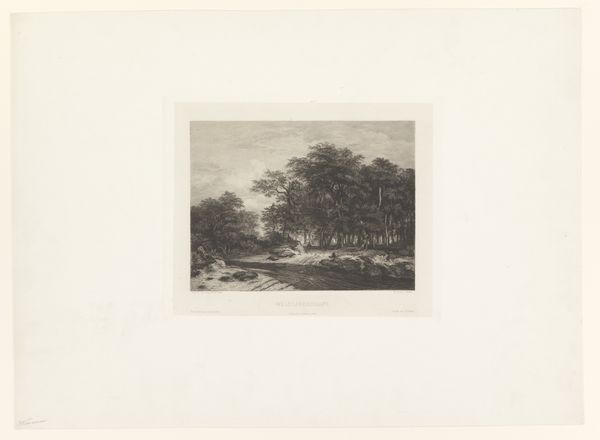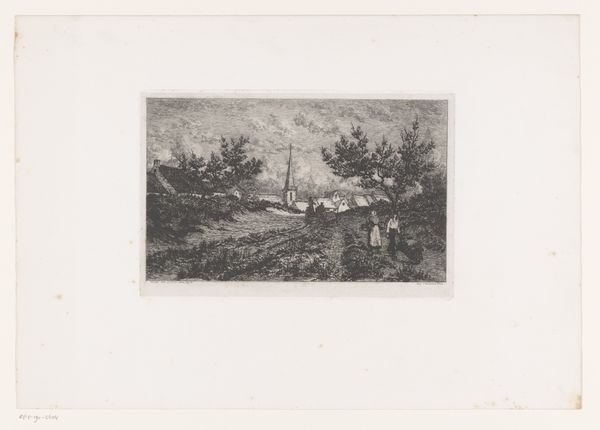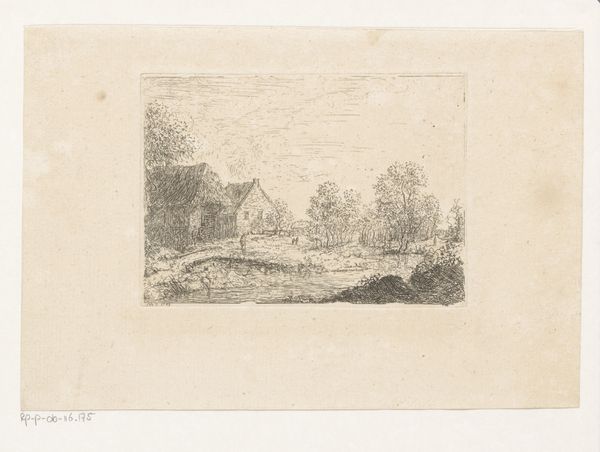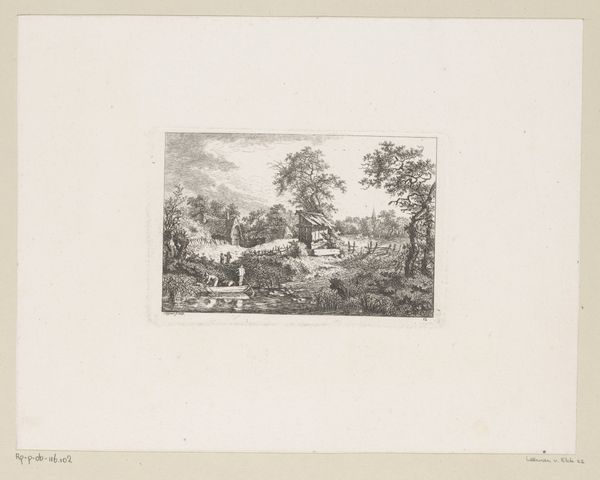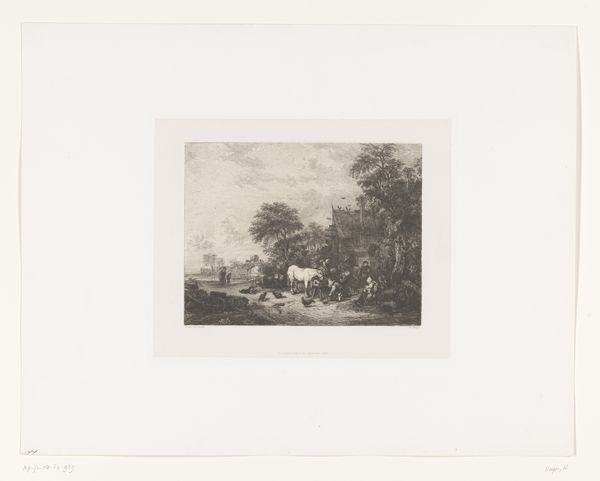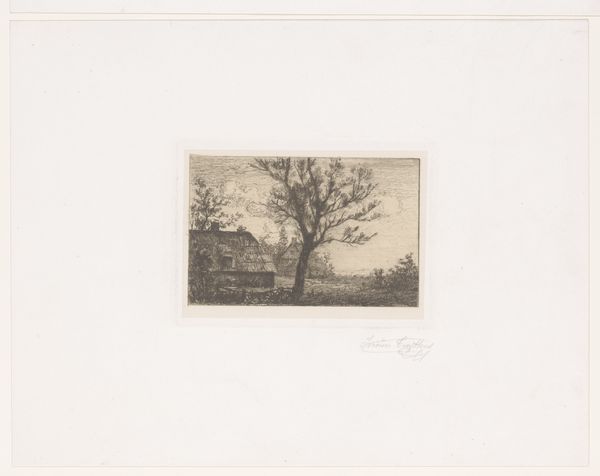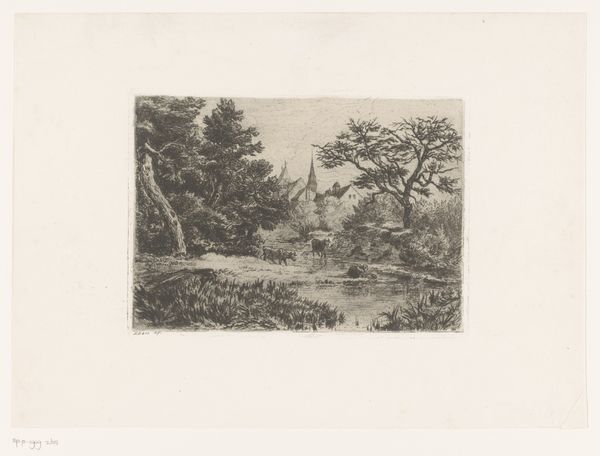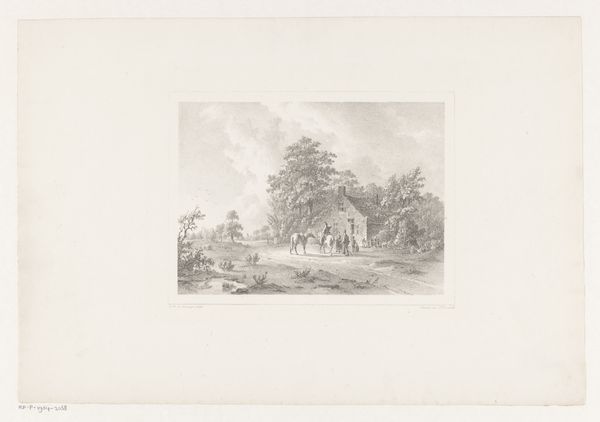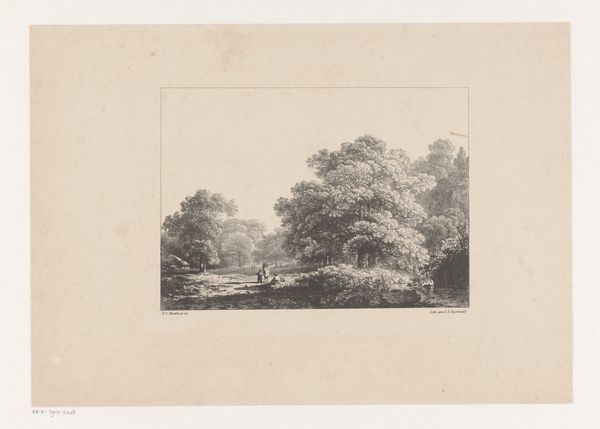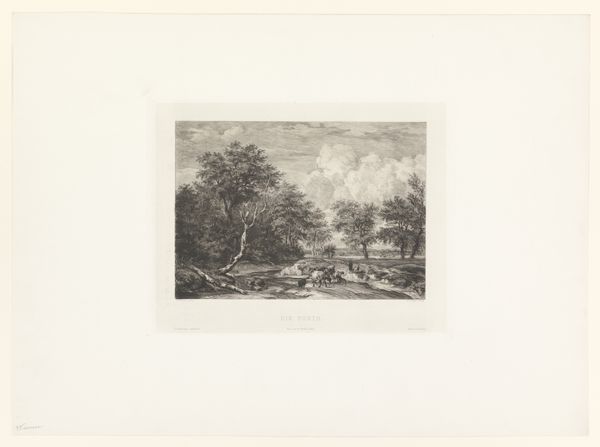
print, etching
# print
#
etching
#
landscape
#
genre-painting
#
realism
Dimensions: height 238 mm, width 258 mm
Copyright: Rijks Museum: Open Domain
Curator: So this is "Boerenwoning," a little etching by William Unger, likely created sometime between 1847 and 1889. Editor: My first thought is just how quiet it feels. It's monochromatic of course, and incredibly detailed. It reminds me of those old fairy tale illustrations, like you might find tucked away in a dusty book. Curator: Absolutely, that intimate quality is a big part of its appeal. Unger was really skilled with the etching needle; you can see that in how he captures the texture of the stone on the building. But it’s more than just technical skill; it shows a growing fascination with rural life during a time of great industrial change. Editor: Right, you get that sense of longing for a simpler past, but I also see a kind of unromantic honesty in it. It's not idealized, is it? That home looks lived in, a bit rough around the edges, with all the mundane aspects of rural life surrounding it. I also appreciate that despite its tiny size, it does still tell a bigger story. Curator: Well, it shows Unger's deep connection with realism as a broader art movement, one focused on capturing life without sugarcoating. This etching gives us access to understanding class and societal conditions outside the grandeur that was usually displayed at museums and galleries, or acquired by the wealthy elite. Editor: Makes you wonder about the stories within those walls. There’s a person in the doorway too. Is it meant to remind us about the connection between the natural world and the people that occupy this space? Curator: The presence of those figures definitely reinforces that theme, placing them within the context of labor, community, and the passage of time. Unger likely witnessed or engaged with them firsthand. The scale, and location here at the Rijksmuseum, further underline his dedication to documenting everyday existence, while ensuring greater access for the masses. Editor: So, more than just a quaint image, it's really a portal into a different era, captured through a specific artistic lens. Makes me rethink how we see “ordinary” scenes. Curator: Indeed, a little window into a much larger world! And with that perspective shift, maybe we begin to see ourselves a bit differently too.
Comments
No comments
Be the first to comment and join the conversation on the ultimate creative platform.
